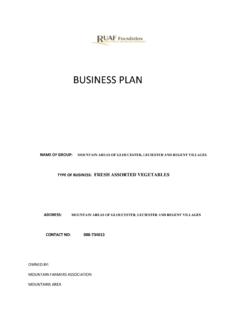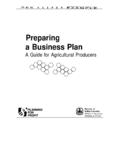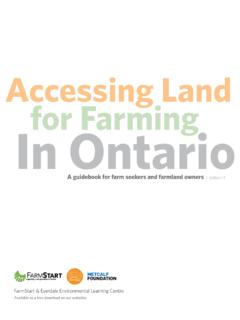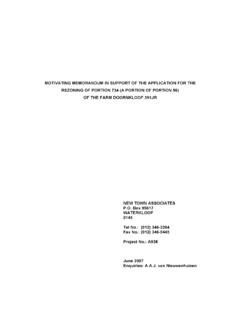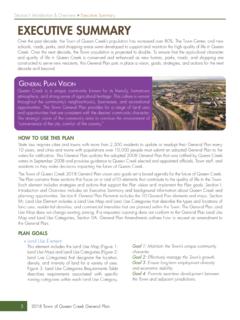Transcription of Poverty Alleviation in China - Personal Website
1 1 Poverty Alleviation in China :A Lesson for the Developing World?Gerhard K. Heilig(1) / Zhang, Ming(2) / Long, Hualou(2)Li, Xiubin(3) / Wu, Xiuqin(4)December 27, 2005 Part of this paper was presentedat the International Conference on theWest Development and Sustainable DevelopmentAugust 2-4, 2005 Urumqi, China2(1)Senior Research Scholar, International Institute for Applied Systems Analysis (IIASA), Leaderof the Research Activity on Sustainable Rural Development (SRD) and Professor for ChinaStudies, Vienna University.(2)Research Scholar, IIASA, SRD-Research;(3)Deputy Head, Institute of Geographic Sciences and Natural Resources Research (IGSNRR),Chinese Academy of Sciences.
2 (4)Associate Professor, College of Soil and Water Conservation, Beijing Forestry to: Gerhard K. Heilig, Neulinggasse 16, A-1030 Vienna, Austria;e-mail: document can be downloaded from: title photo depicts the traditional muslim market in Urumqi - complete with a huge Carrefourmarket, KFC fastfood restaurant, and open food court. In the background the recently renovatedmosque. The photo was taken in August 2005 by Gerhard K. - China s Rural DevelopmentWith Deng Xiaoping s economic reforms in the late 1970s China started its spectacular transi-tion from a state-run economy, based on centralized command and control, to a modern eco-nomic system based on market principles and international cooperation.
3 The first phase in thesereforms was the introduction of the household responsibility system in the early 1980s, whichessentially abandonded the system of communal farming and re-established the autonomy ofthe individual farm household. Millions of peasants were given the freedom (and responsibility)to plan and organize most of their production. They were no longer ordered around in semi-military formations to cultivate collectivized fields, dig irrigation canals, build dams, or evenproduce steel in backyard furnices, as was the case during the Great Leap Forward .They were no longer coerced into unproductive cultivation by Grain First policies and strictlyfixed grain quotas, which often forced them to produce crops under most unsuitable they could switch to the production of more profitable products, such as vegetables, fruits,tobacco or cotton, run fishponds or breed animals; and they could sell part of their production onfree markets.
4 They (or more often their children) could accept off-farm jobs in the emergingvillage industries, and they could join the millions of temporary migrants who went for labor ineast-coast cities. With their remittances they greatly contributed to the economic developmentin the rural often tend to forget, that China s spectacular economic growth in manufacturing industriesand service sectors during the past 15 years was actually based on a fundamental reform of theagricultural sector almost 30 years ago. After decades of collectivization, mass campaigns andpolitical indoctrination, farmers were allowed to make their own decisions and carry out theirown initiatives.
5 It was essentially the (cautious) introduction of entrepreneurial freedom (evenif these words were never used) among millions of peasants. One of the biggest and most rapidrural development programs in human history was not triggered by huge public investments ininfrastructure, or education or public spending, but by a change in the mentality among theleading cadres, who had learned to understand Deng s saying that it is not important whether acat is gray or black, as long as it catches mice . It was the pragmatic recognition that the Chineseagriculture can only develop, if farmers have the freedom to make their own (economic) a consequence of this fundamental change in policy, China s food supply greatly improvedand the rural areas began to develop.
6 Millions of peasants were lifted out of Poverty . The aver-age annual net income of rural households (in constant 1978 prices) more than doubled - RMB in 1978 to RMB in 2003 (see Figure 2, left side and Tables A1 and A2 in theAppendix). In fact, the ratio between real urban and rural income improved considerably be-tween 1978 and 1988: While the urban income in 1978 was almost times higer than the ruralincome, it was only times higher in 1988. In the first decade of economic reform, between1978 and 1988, the income gap between rural and urban areas began to narrow. However, since1989, the urban -rural income gap was widening again; and in 2003, the urban income was times higher than the rural income (see Figure 2, right side and Table A3 in the Appendix).
7 Moreover, there are huge regional divergences in both the rural and urban income growth. InBeijing, Tianjin, Shanghai, Zhejiang, and Guangdong, both rural and urban incomes are muchhigher than in Ningxia, Guizhou, Gansu, Shaanxi, Tibet, Yunnan or Heilongjiang. By far the4 Figure 2: Average Annual Per Capita Income of Rural and urban Households by Province, 2003 Rural HouseholdsUrban HouseholdsSource: China Statistical Yearbook, 2004, Table 10-21 and Table 10-1501,0002,0003,0004,0005,0006,0007,00 08,0009,00010,00011,00012,00013,00014,00 015,00016,000 NingxiaGuizhouGansuHeilongjiaQinghaiAnhu iShaanxiJiangxiHenanShanxiJilinInnerSich uanXinjiangHebeiLiaoningHainanHubeiYunna nHunanGuangxiChongqinShandongTibetJiangs uFujianTianjinGuangdoZhejiangBeijingShan ghai01,0002,0003,0004,0005,0006,0007,000 8,0009,00010,00011,00012,00013,00014,000 15,00016,000 GuizhouGansuShaanxiTibetYunnanQinghaiNin gxiaGuangxiXinjiangAnhuiChongqingSichuan HenanInnerShanxiJiangxiHeilongjiangJilin HunanHubeiHainanHebeiLiaoningShandongFuj ianGuangdongJiangsuTianjinZhejiangBeijin gShanghaiNotes.
8 Rural Net Income refers to the total income of permanent residents of rural households during a year, after deduction ofexpenses for productive and non-productive business operations, payment of taxes and payment to collective units for theircontracted tasks. It also includes the income from non-business operations, such as money remitted by household memberswho are in other places (migrant workers), government relief payments and various subsidies. It is an indicator that shows theactual level of income of rural Disposable Income refers to the actual income of urban households, which can be used for daily expenses. It equals thetotal income plus household subsidies, minus Personal income tax and expenditures on household sideline the rural and urban income is real income in 1978 constant : China Statistical Yearbook, 2004, Table 10-2.
9 The Real Net (Disposable) Income was calculated by multiplying the real incomeindex by the nominal income value of the base year (1978) provided in Table 1: Average Annual Per Capita Income of Rural and urban Households; urban -Rural Ratio, 3: urban -Rural Ratio in Average Annual Per Capita Income by Province, 2003 Source: China Statistical Yearbook, 2004, Table 10-21 and Table Tibetbiggest gap between rural and urban income was reported from Tibet, where, in 2003, urbanhouseholds had more than 5 times the income of rural households. A very high income gap wasalso reported from Yunnan, Guizou, Shaanxi, Gansu, Qinghai, Guangxi and Changqing. On theother hand, Jiangsu had the smallest rural- urban income gap in 2003, where urban householdshad roughly twice the per capita income of rural households.
10 Relatively small rural- urban in-come gaps were also reported from Shanghai, Tianjin, Zheijiang and conclusion, we can identify three rural- urban income trends in China :zChina s rural population had significant income growth in real terms since 1978. Thisclearly improved the situation of hundreds of millions of peasants in the rural- urban income gap, which was declining between 1978 and 1988, has beenwidening since 1989 and is now almost at the same level as in 1978. However, the recentreform of the agricultural tax might stop or even reverse this widening of the rural-urbanincome is a huge regional variation in rural- urban income gap. Eastern and southern prov-inces have a much smaller rural- urban income gap than provinces in central, northern andwestern China .
